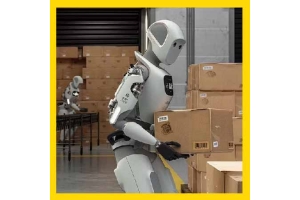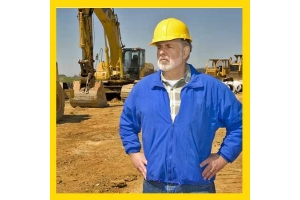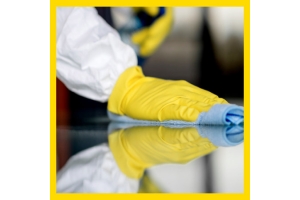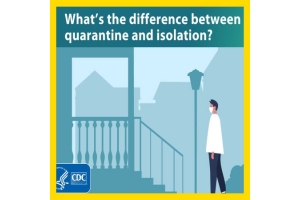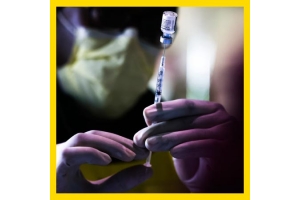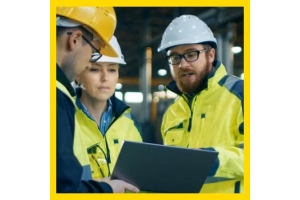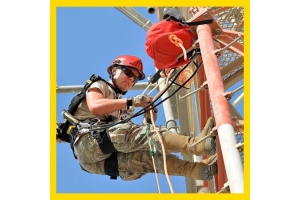Currency
-
August 24, 2019Forklift safety needs to be a top priority in manufacturing and warehouse facilities.
Forklifts are constantly in motion, playing a significant role in the world of commerce. With that notion, keeping safety top of mind is critical in material handling.
Almost 100,000 accidents happen each year around forklifts. While even one injury or incident resulting from the misuse of forklifts is too many, there are tools and methods that can help create a safe environment and help avoid future occurrences. Some contributing factors to watch out for in helping to prevent accidents are workspace layout and design, inadequate training and improper maintenance. It’s essential to incorporate the right safety techniques in these key areas.
WORKSPACE LAYOUT AND DESIGN
Best practices in warehouse/pedestrian safety begin with the design of the -
August 24, 2019The time to put on your seat belt is not after you’ve been in a car accident.
In 2017, there were 270,000 injuries reported in the transportation and warehousing industry. The same industry also saw 819 deaths, a number only surpassed by the construction industry. The number of preventable fatal work injuries in transportation and warehousing grew 5.3% from 2016 to 2017.1
What do these statistics have to do with loading docks? More than 25% of all industrial accidents happen at the loading dock, and for every accident, there are about 600 near misses.2 If your job has anything to do with loading docks, these figures are meant to help you understand how important loading dock safety really is.
Forklift Fall-Through
One of the most dangerous types of accidents that occur at the loading dock is forklift fall-through. This -
August 24, 2019No matter where you are in the world, asbestos kills. For the more than 60 countries where the use of asbestos is now banned, this deadly substance – once deemed a ‘wonder material’ – now presents a ticking time bomb. For countries still using asbestos, however, which includes the UAE despite its ban, the root of the problem is yet to be contained and so the scale of the final problem is yet to be uncovered.
Asbestos is the biggest occupational cancer killer, claiming more than 200,000 lives a year worldwide, according to the Global Health Data Exchange. In the United Kingdom and the United States alone, in 2017 over 55,000 people died from work-related asbestos-caused diseases.
“despite numerous countries in the region banning asbestos, including the UAE in 2006, there is evidence that asbestos containing materials are still being used”
Comparing prevention and policy from the UK and the US allows us to better understand the scope -
August 24, 2019Simple preventative maintenance of thermal management equipment will keep electronics efficient and safe.
The threats that make enclosure thermal management necessary to begin with reach the height of their destructive energies all at once, once a year, in the summertime. While some logistics of manufacturing become vastly less complicated in the summer sun, several interrelated changes in the weather threaten the critical electronics that allow production lines to operate.
These factors—heat, debris, and moisture—must be planned for and neutralized. Fortunately, with the right equipment, staying ahead of summer conditions to ensure maximum uptime requires relatively few and simple interventions. Best practices for getting the most out of electrical cooling equipment in the summer months center on two basic steps: set up equipment right and perform preventive maintenance.
Setting Up Thermal Management Equipment for the Summer Months
-
August 17, 2019Effective communication during a shift handover provides a strong layer of protection in preventing major incidents. In the oil & gas industry, hazards are inevitable and if they are not identified properly, they may lead to regrettable situations such as disasters. Continuous process in the oil & gas industry demands people who carry out operations and maintenance of oil & gas plants, usually within 24 hours, 7 days a week. Therefore, workers are frequently rotated on a routine basis within a cycle refereed as shift work. Within continuous process, shift handover is required between those who are on shift works. Shift handover is defined as transferring responsibilities and tasks from one individual to another or a work team and it is one of the best known types of safety critical communication.
Shift handover is a critical activity with a direct impact on production and safety. Poor shift handover is known to cause operation problems such as plant upsets, unplanned shut downs -
August 17, 2019Confined space (CS) entry has been recognised as a hazardous activity for many years and yet, sadly, it continues to be a source of major accidents and incidents resulting in fatalities and severe environmental pollution around the world.
When you search online, there are a number of examples of fatal CS-related accidents. You may be familiar with such incidents, either as first-hand experience or from colleagues.
As examples:
- Four people died when entering a sewage pit for cleaning as a result of trying to rescue the first entrant who got into difficulties (Gulf News, 2015)
- Three people were killed in ADCO onshore oilfield H2s accident
What is a confined space?
Although a straight forward question, the definition differs from country to country. But the essential features of a confined space such - Four people died when entering a sewage pit for cleaning as a result of trying to rescue the first entrant who got into difficulties (Gulf News, 2015)
-
August 17, 2019The Petroleum Industry has undergone a historic boom, with new technology coming in place. The employment in the oil and gas industry is growing time and again and the jobs in this sector are one of the most dangerous and hazardous. Together with occupational risks, there arise safety risks which include bodily injury to fingers and hands. These are the most vulnerable physical parts which are easily prone to risks and dangers.
Finger and hand injuries are regularly featured in petroleum companies’ incident records. They make up to 50% of the accidents in the sector. As per the 2014 statistics issued by the International Association of Drilling Contractors, 43% of the recorded incidents on exploration and production rigs were comprised of just the injuries related to hand and fingers. Due to which, the companies involved in the oil and gas exploration and production industry are employing more injury prevention strategies.
“43% of the recorded
-
August 17, 2019Be vigilant to prevent heat-related illnesses, injuries. Exposure to fresh air and sunlight, as well as not being confined to an office, are a few of the perks many outdoor workers enjoy. But with the good comes the bad, which includes oppressive temperatures during the summer months, when heat-related illnesses and injuries – even deaths – are a heightened concern.
For workers in the waste removal and recycling industry, being outdoors year-round and coping with extreme temperatures and weather are part of the job.
“No one really faults any trash company for not getting their trash picked up when there’s 6 inches of snow,” said Kirk Sander, vice president of safety and standards at the Arlington, VA-based National Waste and Recycling Association. “If it’s 105 degrees and humid, you also have to have the same understanding that we can’t push [our] bodies that hard.”
Nearly half of all jobs required working outdoors in 2016, according to the Bureau of Labor -
August 08, 2019There are numerous different topics that must be explored when considering the realm of Personal Protective Equipment (PPE) and in particular, protective footwear. It comes in many different shapes and sizes to fit a wide variety of applications.
As with every piece of PPE the key consideration is to understand what hazards you are trying to protect your workers from. This is always best done as part of a formal risk assessment process. The so called ‘hierarchy of control’ determines that PPE should always be the last line of defence in protecting people and that other means of control such as elimination, substitution, isolation, engineering controls and administrative controls, should all be addressed first before considering PPE. In many applications of risk control there will invariably be some form of residual risk that may be further minimised through the use of PPE. A further vital consideration in the selection and use of PPE is to ensure that you are fully aware of and -
August 08, 2019Grinding, cutting and crushing processes, as well as dust, fumes, mists and vapours all have one chemical hazard in common: inhalation of a substance that can cause adverse health effects to the human body. In occupational health, the target organ that one needs to be concerned about when doing a health risk assessment on these processes would be the lungs, and depending on the chemical properties, also the skin.
The respiratory system
The principal function of the lungs is to supply the body with oxygen and remove carbon dioxide. To obtain oxygen, one must first breathe the oxygen into the lungs. Across the body cavity, below the lungs is the diaphragm. When the diaphragm moves downwards it makes a partial vacuum in the lungs.
The pressure of the air outside the body is now greater than the pressure inside the lungs and air is pushed into the nose, down the wind pipe (called the trachea) where it splits into two bronchis: one entering

